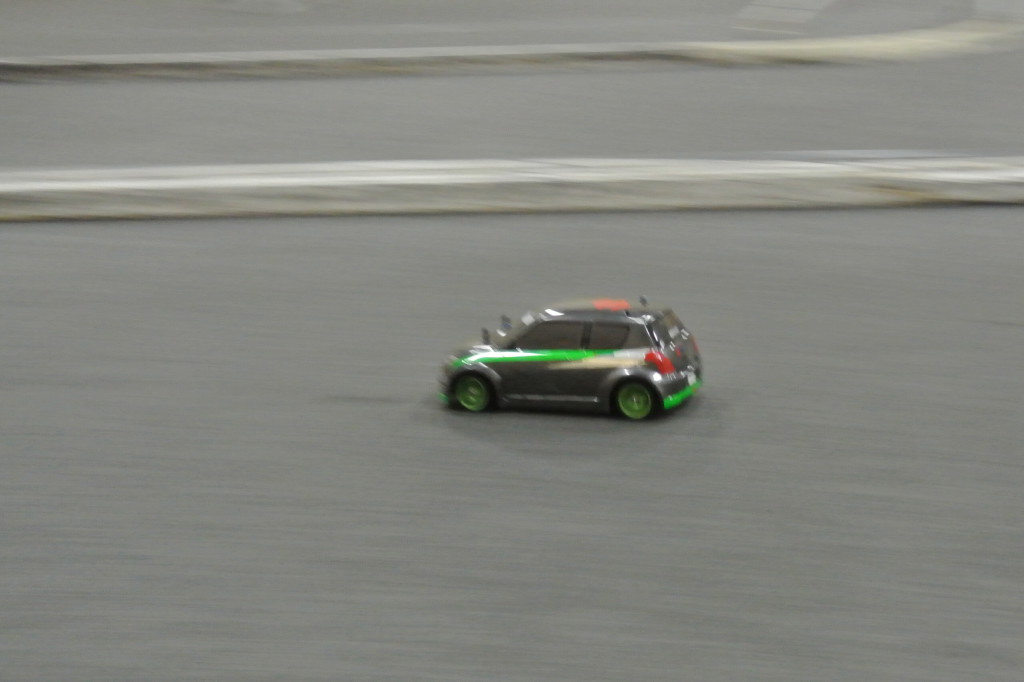Here’s a quick tip on lettering even the smallest tire sidewalls. I essentially used the technique in this video, but with some extra techniques to work on a 1/10 scale on-road tire:
Body painting inspiration
When I first registered MeatballRacing.com in 2006, I had an idea to write a post called “Ban the Stratus” – here’s an excerpt:
For a while the Dodge Stratus seemed to be the body of choice for 1/10th scale radio controlled touring cars. It is the body that every company makes that all R/C racing sanctioning bodies approve of. While many racers have recently sought alternatives, I will not be happy until the Stratus is gone entirely.
To quote one rulebook: “Bodies used in ROAR-sanctioned events must resemble vehicles used in full scale racing for the type of event being conducted.” But you’re more likely to be hit by a Stratus in a car crash than you would see one on an actual race track. If everyone’s going use the Status body, why not paint them faded Chrysler burgundy and require torn cloth interiors, as they’re seen in full scale?
There are several other sedans that could be approved by racing bodies that are actual race cars, why not them? Admittedly, I must give props to those racers who have already switched to the Mazda6 body, which can be seen in the Speed World Challenge Touring Car series.
Bleh, I’m glad it’s gone! That’s why I like the Vintage Trans-Am (VTA) and USGT racing series. I want to see race cars like this:
200mm TC6
I did this mod to my TC6.1 because it’s a dedicated VTA racer. To be honest, 99% of the people out there racing VTA are using 190mm touring car chassis’. However they’re all also running 200mm bodies on them, which can sometimes look a little weird with the wheels tucked way up underneath.
Many of the 200mm VTA bodies that we use today were created by HPI in the early 2000s before the USVTA series existed. They were originally intended to be used with their RS4 chassis which included settings for both 190mm touring car bodies (The chassis actually measured 180mm), and 200mm for their wider bodies. The rear vintage wheels and tires have an offset so the 200mm bodies don’t look too bad on a 190mm chassis. But a select few bodies like the ’70 Charger and ’68 Camaro have an extra-wide 210mm rear. This is when the wheels tucked under look a little silly. Let’s fix that…
[Read more…]
Vintage Trans-Am powerplant history
Here is a summary of my findings regarding the powerplant history for the US Vintage Trans-Am racing series, as well as our Minnesota variant. Some of the comments are moot-point as the previous series manufacturer, Novak, is no longer in business. But it may provide useful insight for the newcomers out there.
[Read more…]
Vintage Trans-Am Go Green Envy Challenger
In the spirit of Crawl, Walk, Run, after racing twice in the USGT class and doing nothing much but crashing and annoying lapping traffic, I decided it was time to slow down. I repurposed my HPI RS4 for US Vintage Trans-Am, commonly known as VTA.
Go Green with Envy
I wanted to drive a great looking muscle car, something I could see myself driving in real life. One image that was stuck in my mind was this Challenger:
Crawl, Walk, Run
This is a rule we use in life. You have to learn to crawl (or scoot), then walk, then run. I’ve treated my (re)entry into R/C racing the same way.
Alternate Crawl – Tamiya Mini
There is an alternative way to enter on-road R/C racing than Vintage Trans-Am (which I’ll talk about below) which is slower, but still a ton of fun. It is the Tamiya Mini class.




